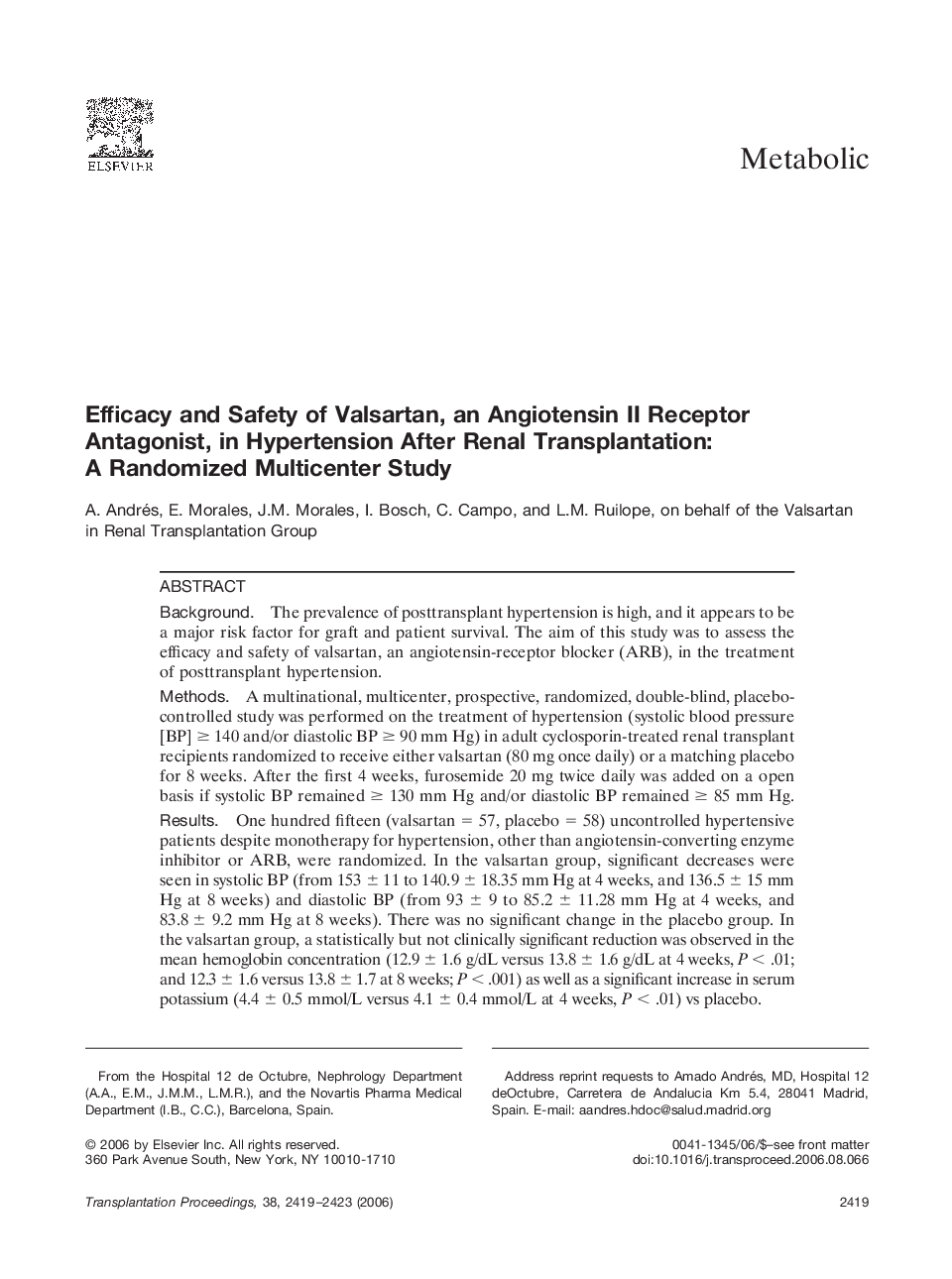| Article ID | Journal | Published Year | Pages | File Type |
|---|---|---|---|---|
| 4261503 | Transplantation Proceedings | 2006 | 5 Pages |
BackgroundThe prevalence of posttransplant hypertension is high, and it appears to be a major risk factor for graft and patient survival. The aim of this study was to assess the efficacy and safety of valsartan, an angiotensin-receptor blocker (ARB), in the treatment of posttransplant hypertension.MethodsA multinational, multicenter, prospective, randomized, double-blind, placebo-controlled study was performed on the treatment of hypertension (systolic blood pressure [BP] ≥ 140 and/or diastolic BP ≥ 90 mm Hg) in adult cyclosporin-treated renal transplant recipients randomized to receive either valsartan (80 mg once daily) or a matching placebo for 8 weeks. After the first 4 weeks, furosemide 20 mg twice daily was added on a open basis if systolic BP remained ≥ 130 mm Hg and/or diastolic BP remained ≥ 85 mm Hg.ResultsOne hundred fifteen (valsartan = 57, placebo = 58) uncontrolled hypertensive patients despite monotherapy for hypertension, other than angiotensin-converting enzyme inhibitor or ARB, were randomized. In the valsartan group, significant decreases were seen in systolic BP (from 153 ± 11 to 140.9 ± 18.35 mm Hg at 4 weeks, and 136.5 ± 15 mm Hg at 8 weeks) and diastolic BP (from 93 ± 9 to 85.2 ± 11.28 mm Hg at 4 weeks, and 83.8 ± 9.2 mm Hg at 8 weeks). There was no significant change in the placebo group. In the valsartan group, a statistically but not clinically significant reduction was observed in the mean hemoglobin concentration (12.9 ± 1.6 g/dL versus 13.8 ± 1.6 g/dL at 4 weeks, P < .01; and 12.3 ± 1.6 versus 13.8 ± 1.7 at 8 weeks; P < .001) as well as a significant increase in serum potassium (4.4 ± 0.5 mmol/L versus 4.1 ± 0.4 mmol/L at 4 weeks, P < .01) vs placebo.ConclusionsValsartan is effective in the treatment of posttransplant hypertension and is well tolerated.
